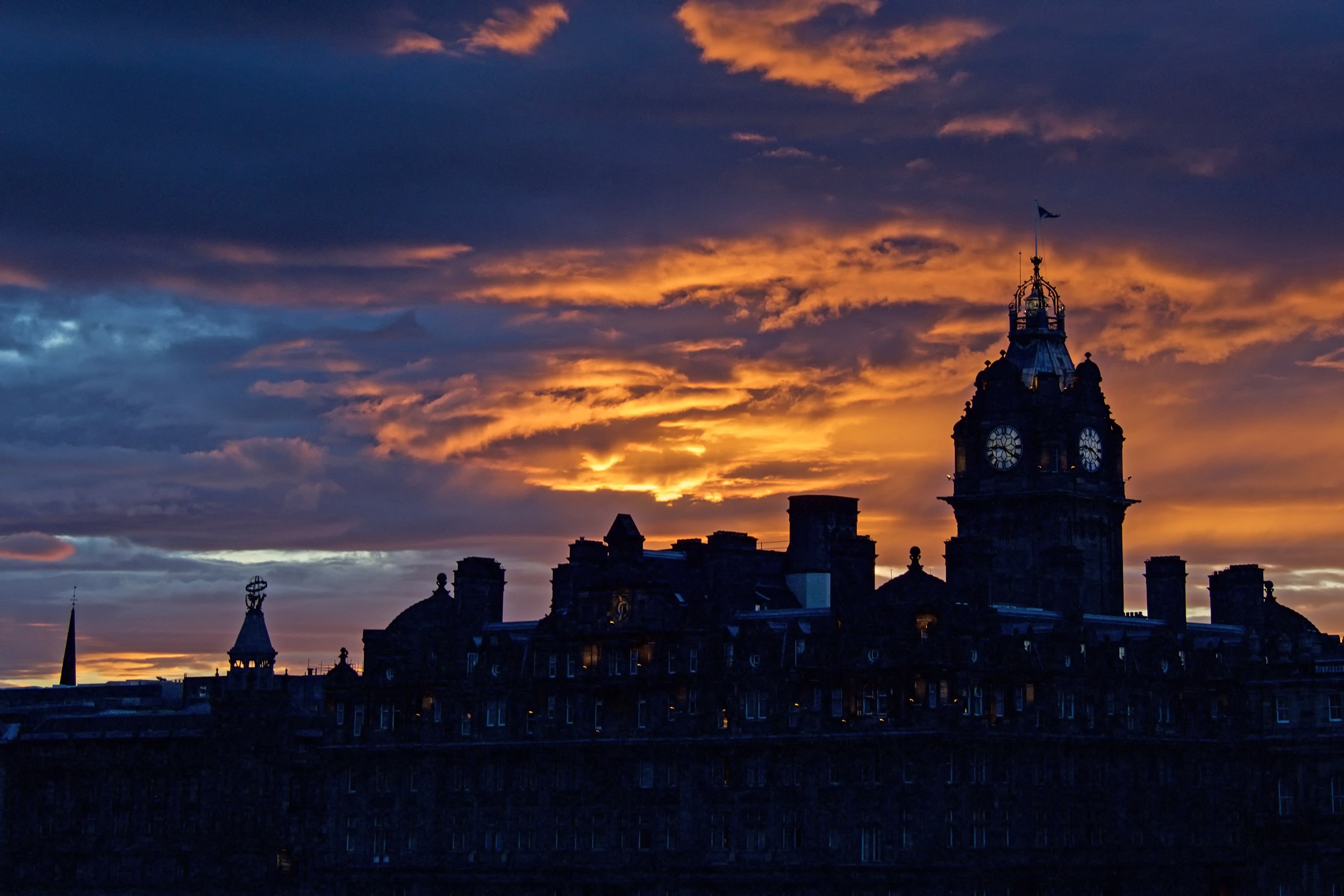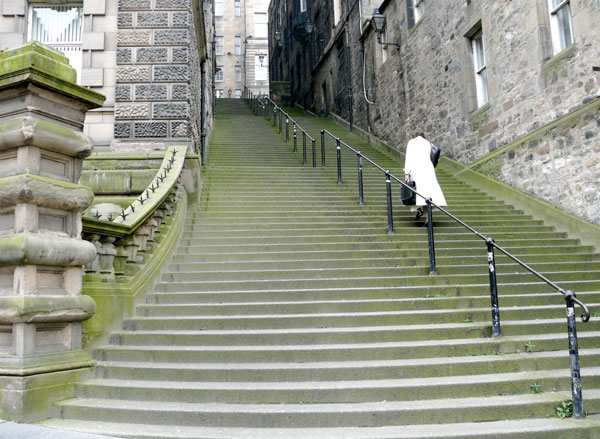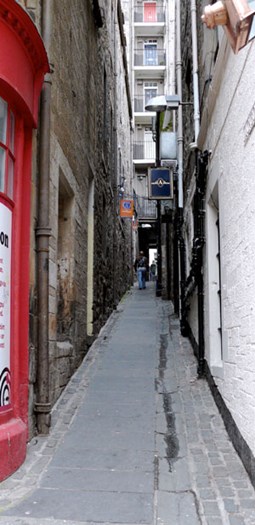EDINBURGH - This is a city where “close” encounters happen every few minutes when you walk around the historic streets of its Old Town.
My first “close” encounter occurred at the corner of Bank St. and the Royal Mile while admiring a colourful sign hanging on the side of a pub which told the story of a man named Deacon Brodie, for whom the pub was named. As I read, a local woman approached.
“He was a real demon, that Beacon Brodie,” said the woman in a brogue thicker than the early morning mist hanging over the handsome monuments and churches lining the iconic Royal Mile.
“Deacon Brodie was actually the inspiration for Robert Louis Stevenson’s Dr. Jekyll and Mr. Hyde,” said the woman of the local legend who, according to the writing on the sign, “was a wealthy, pious citizen (he was even elected a councillor in 1781) during the day” but turned into a gambler, thief and eventually a killer at night.

Above: Edinburgh is a city with many haunting secrets.
Brodie, born in 1741, terrorized the closes - the term used to describe the narrow, linear alleys or walking streets that connect the upper Old Town with the lower portion of this volcanic city built on a lava flow - before being caught and executed in 1788.
“He was hung right over there, near St. Giles Close,” said the woman while pointing to an area behind the impressive High Court building across the street from the pub.
The woman, who noticed her double-decker bus fast approaching, told me to “keep walking down the Royal Mile and you’ll come across many other closes – there’s plenty along there for you to explore,” she said as the doors closed and the bus pulled away.
In fact, Edinburgh has about 60 closes and each bears the name of the prominent family who lived on the close or the business conducted on them. For instance, Advocate’s Close was where Lord Advocate Sir James Stewart lived and Old Fishmarket Close, well, that is pretty self explanatory.
The most famous of all Edinburgh’s closes is Mary King’s Close — believed to be the most haunted place in Great Britain.


Above: Edinburgh's moss-covered steps and narrow alleys are where encounters happen.
“Can I interest you in a tour,” said a voice from behind.
“Just gathering information,” I said while turning to find the voice belonged to a man dressed in period costume.
The man identified himself as a guide and confirmed Mary King’s Close was indeed the most haunted place in the United Kingdom.
“This close was built over an old cemetery where victims of the city’s plague (1645) were buried in mass graves,” said the man who said the underground Mary King’s Close had become one of the city’s biggest tourist attractions.
The guide suggested I rethink my plans for the evening (guided tours are held throughout the day but the scariest ones are at night) and return for the last tour, “around 9 o’clock tonight.”
The guides assume the identity of historic characters during the tour and conduct first person narration. It is said that trembling hands will suddenly grab your coat or hand while you pass through the underground chambers that run off the close during the tour. Yikes!
Many of the ghosts from the 1645 plague still occupy the close today and one, a little girl named Annie, attracts gifts of dolls and money that ultimately get donated to a children’s charity.
Mary King’s Close — an archway on High Street (part of the Royal Mile) located across from the High Kirk (church) of St. Giles — has often been described as Scotland’s Pompeii.
Another of the famous closes is Paisley Close, site of a tragic accident in 1861 when a building collapsed, killing 35 people. During rescue efforts, a voice of a young boy trapped in the rubble was heard to say: “Heave awa’ chaps, I’m no’ dead yet.” The boy, whose name was Joesph McIvor, survived and lived to a ripe old age. His portrait and the words he spoke that day now hang over the arched close entrance.
The last close on the south side of High Street is World’s End Close, so named because it was next to the now demolished Netherbow Port (gate), which marked the boundary of the Old Town (and the end of the Royal Mile) and the independent borough of Canongate, which became part of Edinburgh in 1856.
The World’s End Pub, circa 1800s, is a great place to end your “close encounters” tour of Edinburgh – a place where close encounters are of the good kind.
About the Author
Marc Atchison is a veteran journalist and a seasoned traveller with more than 20 years of travel writing experience. As the former Travel Editor of the Toronto Star, Canada's largest newspaper, and now Editor-in-Chief and Senior Writer for TraveLife magazine (Canada) and travelife.ca, Marc has been to over 100 countries in the world. Japan is one of his favorite destinations and he's been there on numerous occasions.